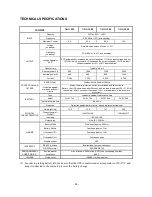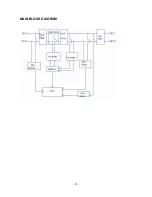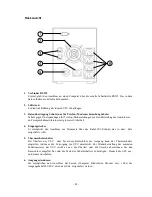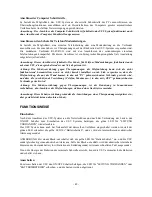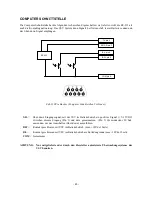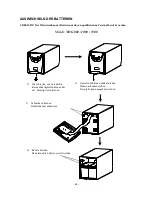
- 31 -
Self diagnostic “Battery Test” (via software)
Use the self-diagnostic battery test (refer to the enclosed software guide) to test the battery conditions. In
normal power supply status and with charged batteries, run the “Test Battery” command. The UPS will
perform the self-diagnostic test. During the test, the UPS will run off the batteries for a few seconds.
N.B.
:
During the test, the UPS will briefly power the loads from the batteries.
If the self-diagnostic test is completed successfully, the UPS will return to mains power after a few
seconds.
If the test fails, mains power is restored immediately to the UPS and the “Replace batteries” LED comes
on. The loads are not affected. Charge the battery for 6-8 hours and repeat the test. If the “Replace
batteries” LED remains on, call the nearest distributor for replacement batteries.
ALARMS
"BATTERY MODE"
(Beep every 5 seconds)
In “Battery Mode", the yellow LED comes on and the UPS sounds an audio signal. This stops when the UPS
starts operating off mains power again. The alarm may be disabled using the “Silence” button located on the
front panel of the UPS.
"BATTERY LOW" (Beep every second)
When the UPS is operating in “Battery Mode” and the batteries start getting low, a fast beep will be
sounded until the unit stops due to battery failure or until the mains power supply is restored. The
alarm may be disabled using the “Silence” button located on the front panel of the UPS.
"OVERLOAD" (Fast or continuous beep that cannot be disabled)
When an overload condition occurs on the UPS (when the connected loads exceed the maximum nominal
capacity), a fast or continuous beep will sound. Disconnect any non-essential devices to reduce the load.
This alarm cannot be disabled.
Summary of Contents for NEtDialog NDG 1000
Page 2: ......
Page 12: ...12...
Page 24: ...24 SCHEMA A BLOCCHI GENERALE...
Page 25: ...25...
Page 37: ...37 MAIN BLOCK DIAGRAM...
Page 38: ...38...
Page 50: ...50 HAUPTBLOCKDIAGRAMM...
Page 51: ...51...
Page 63: ...63 SCH MA FONCTIONNEL PRINCIPAL...
Page 64: ...64...
Page 76: ...76 DIAGRAMA DE BLOQUE PRINCIPAL...
Page 77: ......




















